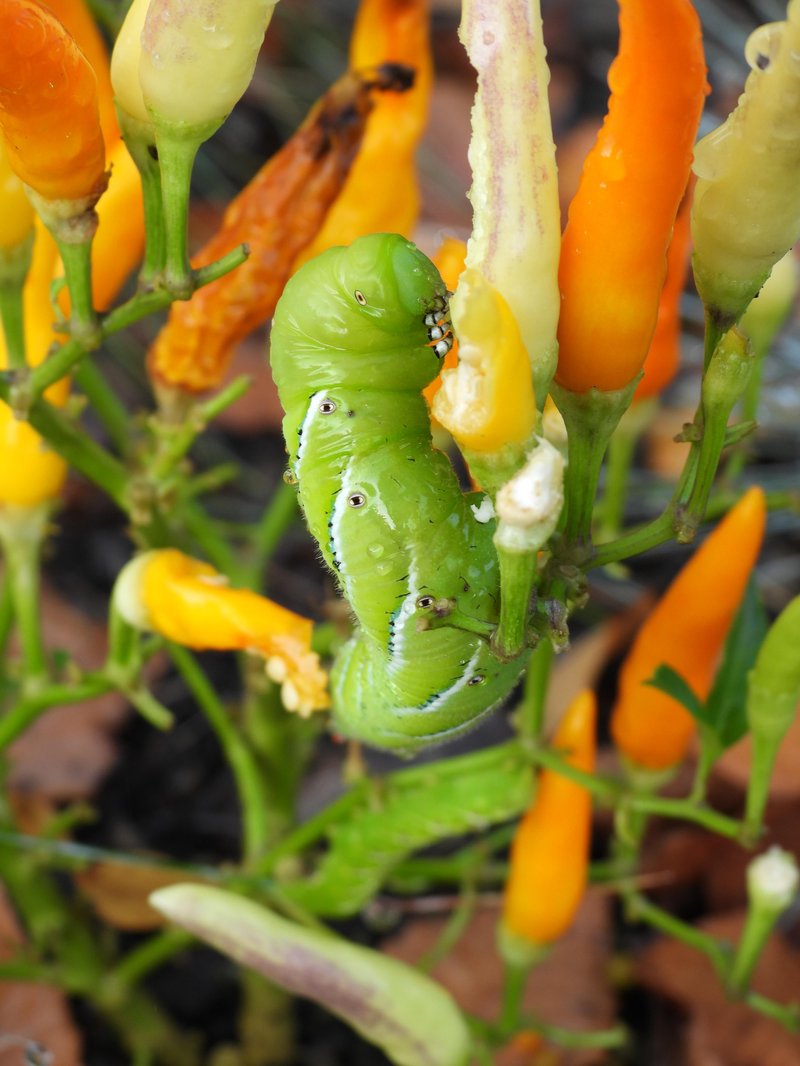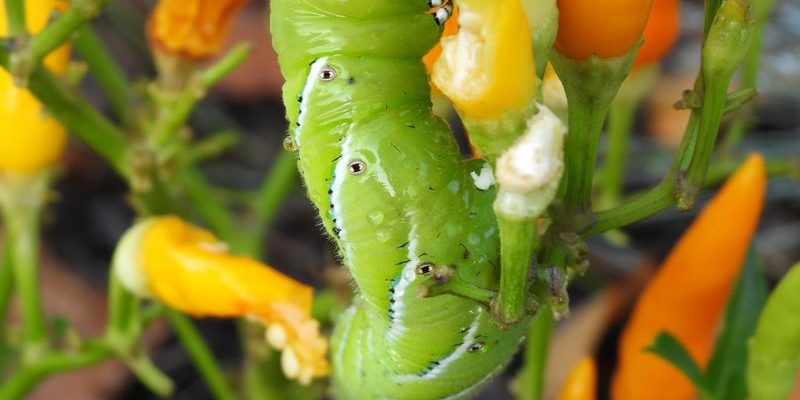
Hornworms, specifically the larval stage of hawk moths (or sphinx moths), are notorious for their voracious appetites. They can eat an astonishing amount of foliage, especially when they’re young and growing. In this article, we’ll dive deep into their eating patterns, what they prefer to munch on, and how you can coexist with or manage them in your garden. So, grab a cup of coffee, and let’s chat about these fascinating little creatures!
What Are Hornworms?
Hornworms are the caterpillar stage of hawk moths, and they’re commonly found in gardens and agricultural areas. With their vibrant green bodies, they can be quite striking—almost like a little green dragon lurking among the plants. Their most recognizable feature is the horn-like projection on their rear end, which gives them their name. You might be wondering why these creatures are important to understand, especially if you’re tending to your own vegetable patch or flower garden.
Hornworms typically feed on tomato, tobacco, and pepper plants. However, they can also munch on a variety of other garden favorites. Their presence can mean trouble if you’re not prepared, as they can strip your plants bare in a matter of days. But don’t fret; with a bit of knowledge about their feeding habits, you can either manage them or learn to appreciate their role in the ecosystem.
Feeding Preferences of Hornworms
Hornworms have very specific taste preferences. They primarily dine on plants in the nightshade family, which includes tomatoes, potatoes, and eggplants. Here’s the kicker: they have a particular fondness for young, tender leaves, which is why they often go after newly sprouted vegetation.
When you’ve got a healthy garden, those hornworms can be like kids in a candy store! You might find them munching away on leaves, leaving behind distinct, jagged edges. If you see this, take note; it’s a sure sign that hornworms are feasting in your plants.
Interestingly, they also have a knack for finding the juiciest parts of the plant. If you happen to spot a hornworm, it’s likely that it’s chosen a prime location—a lovely, fresh leaf, full of nutrients. Their feeding habits are not just random; they know what they need to grow strong and large.
Life Cycle of Hornworms: How Feeding Changes
The life cycle of a hornworm typically involves several stages: egg, larva (the hornworm stage), pupa, and adult moth. During the larval stage, which can last about three weeks, these caterpillars do the bulk of their feeding. Think of it like a teenager going through a growth spurt!
In this stage, hornworms can increase their weight dramatically. They might gain as much as 2,000 times their original weight. That’s a huge appetite! The feeding habits during this time are crucial for their development. They consume as much foliage as they can to store up energy for their transformation into moths.
Once they have reached their full size, hornworms will stop feeding and prepare to pupate. They often wander away from their food source to find a safe spot in which to undergo this process, meaning that their feeding frenzy is temporary but impactful.
Signs of Hornworm Infestation
So how do you know if hornworms have taken up residence in your garden? The signs can be quite obvious. You might notice:
- Damaged Leaves: Jagged, chewed edges are a telltale sign.
- Droppings: Small, dark pellets on the ground beneath your plants indicate that hornworms are dining nearby.
- Presence of Hornworms: These caterpillars are often well-camouflaged, but if you look closely, you may spot them nestled among your plants.
When you see these signs, it’s time to act. These little munchers can quickly devastate your garden if left unchecked. It’s like a buffet that just won’t stop attracting guests!
How to Manage Hornworm Feeding
If you’ve discovered hornworms in your garden, don’t panic! There are several effective ways to manage their feeding habits without resorting to harsh chemicals. Here are some options:
1. Handpicking: This is the most straightforward method. Just go out with a pair of gloves and remove the hornworms you find. You can either relocate them to a different area or dispose of them.
2. Natural Predators: Encourage birds and beneficial insects that prey on hornworms. Planting a variety of flowers can attract these helpful critters.
3. Organic Insecticides: If you prefer a chemical approach, consider using organic sprays like neem oil or insecticidal soaps. These are less harmful to beneficial insects and the overall garden ecosystem.
4. Companion Planting: Some plants can deter hornworms. Marigolds, for instance, are known to repel these pests, thanks to their strong scent.
By using these methods, you can manage hornworm populations and protect your plants. It’s all about finding the balance that works for your garden.
Why Understanding Hornworm Habits Matters
So why should you care about hornworms and their feeding habits? Beyond the immediate impact on your garden, understanding these pests provides insight into your local ecosystem. Hornworms are not just pests; they are part of a larger cycle of life. By knowing how they feed and grow, you can make informed decisions about how to manage them.
Additionally, recognizing their role can allow you to appreciate nature’s design. They transform into beautiful hawk moths, contributing to pollination. Every creature has a purpose, and hornworms are no exception.
In conclusion, understanding the feeding habits of hornworms in home gardens can help you manage these pests effectively. From their preferences for tender leaves to the signs of their presence and ways to control them, knowledge equips you to protect your garden. Remember, there’s a balance to maintain, and with thoughtful management, you can nurture both your plants and the smaller creatures that share your space.
Happy gardening!

